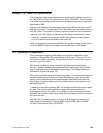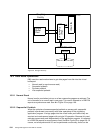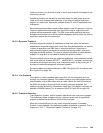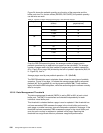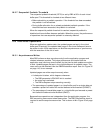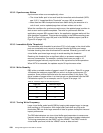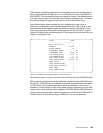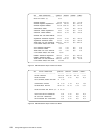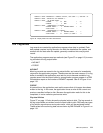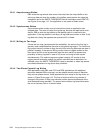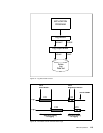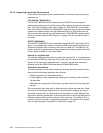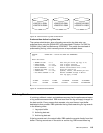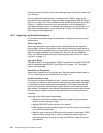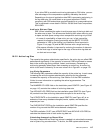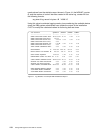
DB2 I/O Operations 111
Figure 36. Display Buffer Pool Data Set Statistics
10.4 Log Writes
Log records are created by application programs when data is updated. Each
data update requires two log records, one with the data before the update, and
another with the data after the update, generally combined into one physical
record.
The application program uses two methods (see Figure 37 on page 113) to move
log records to the log output buffer:
•NOWAIT
• FORCE
NO WAIT
Most log records are moved to the log output buffer, and control is immediately
returned to the application program. These moves are the most common. If no log
buffer is available, the application must wait for one to become available. Log
records moved into the output buffer by an application program appear in a DB2
PM statistics report as the number of NOWAIT requests. See
C in Figure 41 on
page 118.
FORCE
At commit time, the application must wait to ensure that all changes have been
written to the log. In this case, the application forces a write of the current and
previous unwritten buffers to disk. Because the application waits for this to be
completed, it is also called a synchronous write.
Physical Writes
Figure 37 on page 113 also shows the physical writes to disk. The log records in
the log output buffer are written from the output buffer to disk. DB2 uses two types
of log writes: asynchronous and synchronous, which will be explained further.
These writes to the active log data set are shown by DB2 PM as
E inFigure41on
page 118.
DSNB450I =DB2Z TABLESPACE = DSNDB06.SYSCOPY, USE COUNT = 0, GBP-DEP = N
DSNB452I =DB2Z STATISTICS FOR DATASET 1 -
DSNB453I =DB2Z VP CACHED PAGES -
CURRENT = 64 MAX = 64
CHANGED = 0 MAX = 0
DSNB455I =DB2Z SYNCHRONOUS I/O DELAYS -
AVERAGE DELAY = 9 MAXIMUM DELAY = 22
TOTAL PAGES = 3
DSNB456I =DB2Z ASYNCHRONOUS I/O DELAYS -
AVERAGE DELAY = 1 MAXIMUM DELAY = 1
TOTAL PAGES = 61 TOTAL I/O COUNT = 2



